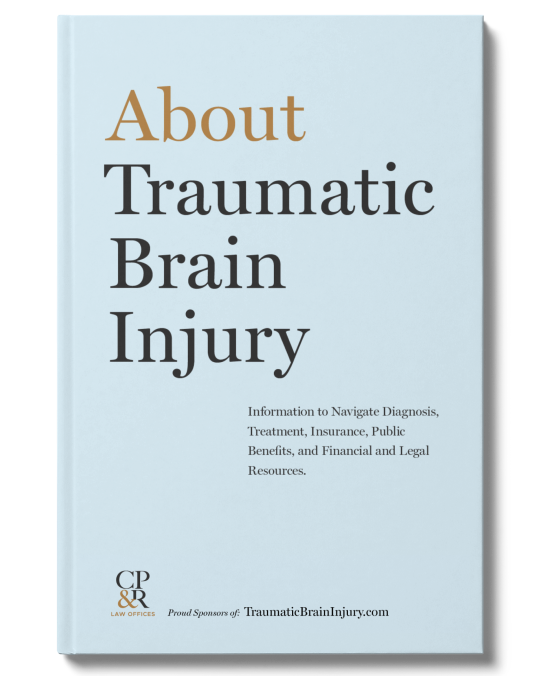Prolonged Labor and Birth-Related Medical Malpractice Success Stories for CP&R Clients
The lawyers at Cohen, Placitella & Roth have made substantial recoveries for our clients in prolonged labor and birth-related medical malpractice cases. Here are examples of a few of the successful outcomes in these lawsuits.
Request our Free Book on Traumatic Brain Injury

The experienced medical malpractice attorney team at Cohen, Placitella & Roth has spent decades holding negligent healthcare providers accountable when their actions — or lack thereof — cause life-changing injuries before, during, and after the birth of a child Traumatic Brain Injury and Cerebral Palsy at Birth: Understanding Prolonged Labor Risks and Duty of Care. These real-world cases show how our team investigates, builds, and wins complex medical malpractice claims — delivering meaningful recoveries and justice for our clients.

The Case of the Delayed Delivery
Our firm brought a birth injury lawsuit against a prominent hospital and one of its obstetrical physicians for profound brain injuries and CP caused by a delay in delivering a baby. The claim centered around events that occurred in the spring of 2012, when a young mother went to the hospital at 24 weeks pregnant with complaints of severe cramping and nausea. Upon arrival, her fetal membranes ruptured, classifying her as a high-risk patient who required close monitoring. Despite electronic fetal monitoring (EFM), the hospital staff, including the attending physician and nursing staff, failed to continuously monitor the baby’s fetal heart tracings, as per the standard of care and hospital policies.
The evidence revealed that the fetal heart tracings showed significant distress starting around 2:30 p.m., with signs of fetal tachycardia (a fast heartbeat) and deep variable decelerations (abnormal heart rate). Despite these alarming changes, there were prolonged lapses in care, including a lack of continuous monitoring and a delayed response from the medical team. Hours passed without a review of the fetal heart tracings by any physician, and the mother was not examined, despite the onset of vaginal bleeding, which indicated a placental abruption (when the placenta pulls away from the wall of the mother’s uterus, which can cause complications for the mother and unborn baby). Delivery was delayed, and as a result, there was significant fetal hypoxia, increasing the risk of brain damage and CP.
In this case, we proved that the hospital staff failed to follow its own established protocols and that the physicians breached the standard of care. The nursing staff’s lack of familiarity with critical policies and procedures, coupled with the attending physician’s failure to act in response to the deteriorating fetal monitoring and other signs and symptoms, were pivotal in proving negligence. By proving that this was substandard care, we were able to obtain a multimillion-dollar settlement for the family. The case highlighted the importance of continuous monitoring and timely intervention in high-risk pregnancies to prevent adverse outcomes.
The Case of the Delivery Past the Due Date
In another case, our client was past her due date with her first baby boy. Her obstetrics team performed a nonstress test, which monitors the baby’s heart rate and responses to movement or contractions. This test evaluates how the baby will respond to stress while still in the womb. If the baby shows signs of stress during this test, and the mother is at term (as this mother was), the standard practice is to induce labor. There is no reason to keep a fully developed baby in utero if there are signs that the baby is not responding well to stress. Furthermore, there are significant risks to not delivering a fully developed baby who is showing signs of distress. The evidence in this case showed that this baby boy was at increased risk of brain injury, infection, and death. Here, the nonstress test was abnormal; however, the obstetrical team failed to recommend that labor be induced to deliver a healthy baby.
Two days after the abnormal nonstress test, our client spontaneously went into labor. The obstetrical team, which included obstetricians, certified nurse midwives, and obstetrical nurses, allowed our client to labor for nine hours, despite evidence that the baby was in distress. During labor, an external fetal monitor was used to check the baby’s heart rate. There is an accepted normal range for a baby’s heart rate during labor. If the heart rate falls below the acceptable range, it means the baby is responding to a stressful event and is likely to be in distress. Our client’s son’s heart rate was persistently abnormal during the nine-hour labor, and despite interventions, the obstetrical team could not obtain a consistent normal heart rhythm. As a result of the inadequate oxygenation to the baby’s brain, he suffered a brain injury, which then caused him to develop severe CP. This child will never walk, talk, eat, play, graduate from school, go to college, or get married.
We consulted respected and professionally qualified experts in neonatology, obstetrics, pediatric neurology, and clinical genetics. There were nine defendant medical providers named as defendants in the lawsuit, and a total of 21 experts who provided opinions on both sides. Based on the investigation and significant preparation by our legal team and experts, we were able to prove that the obstetrical providers were negligent in failing to deliver this baby after the abnormal nonstress test. We were also able to prove that the obstetrical team was negligent during labor and delivery when they allowed the mother to labor despite obvious signs that the baby was in distress. We were able to secure a significant settlement in this case that changed the lives of this child and his family. The settlement will allow his family to provide him with the necessary care and the best life possible.
The Case of the Negligent Discharge of a Child After Surgery
 CPR obtained a significant recovery on behalf of a minor child who was injured because of medical malpractice and a hospital’s institutional malpractice. Our minor client suffered brain damage and CP because of hypoxic encephalopathy, where oxygen or blood flow to the brain was reduced. Our client’s mother also recovered in this case in her own right because she witnessed the negligent care provided to her daughter.
CPR obtained a significant recovery on behalf of a minor child who was injured because of medical malpractice and a hospital’s institutional malpractice. Our minor client suffered brain damage and CP because of hypoxic encephalopathy, where oxygen or blood flow to the brain was reduced. Our client’s mother also recovered in this case in her own right because she witnessed the negligent care provided to her daughter.
Our minor client was born prematurely and had a history of chronic lung disease, requiring a tracheotomy and supplemental oxygen at home. However, before the medical negligence, she was living at home with her family, her health was improving, and her prognosis was good. On the recommendation of an ear, nose, and throat surgeon, she underwent an elective procedure that was to be performed under general anesthesia in the short procedure unit of a hospital. The treating physicians planned to release the child into the care of the mother on the same day of the surgery. However, after the procedure, the mother asked that our client be admitted as an inpatient because the baby seemed to be “off” and appeared to be under the effects of the anesthesia. The mother’s request was denied. Upon arrival home, the child’s condition deteriorated further. Her mother immediately called for an ambulance to return to the same hospital, but it was too late to avoid catastrophic consequences.
Before our firm was retained, our client’s parents approached several law firms, and all had declined to represent the family. We obtained the full medical records, including the hospital’s policies and procedures concerning discharge. We consulted pediatric experts in otolaryngology, anesthesia, neonatology, and hospital administration. Based on this investigation and these expert consultations, we were able to prove that the surgeon and staff violated the hospital’s own written policy, which required a post-procedure overnight admission for this child, given her medical history and the facts of her surgery. Indeed, the hospital’s purpose for this policy was to prevent hypoxic incidents like this. We proved that the surgeon and anesthesiologist did not follow these written policies and were unaware of the extent of the patient’s prior history. In addition, the physicians were not aware of the mother’s request for admission, which was refused by a nurse who did not consult with the physicians. No physician examined the child before discharge. The life of this family — and their ability to appropriately care for their child — were enormously improved by the recovery from this lawsuit.
The Case of the Inexperienced Provider
In another of our cases, we represented the family of a healthy baby girl who was delivered by a midwife at a birth center, which was an outpatient facility not affiliated with any hospital and staffed by certified nurse midwives and nurses. No physician was on duty, which is typical for this type of facility. (Some birth centers are located within hospitals, where physicians and medical resources are available in an emergency. This birth center was not.)
Shortly after birth, the baby developed symptoms of respiratory distress. Respiratory distress is a known and common complication after babies are born, and the standard of care requires prompt treatment. The medical team is required to promptly recognize and treat respiratory distress because delay can result in brain injury, CP, and death. Respiratory distress can present with symptoms such as tachypnea (rapid breathing), nasal flaring, intercostal or subcostal retractions (where the skin between or below the ribs pulls in during inhalation), audible grunting, and cyanosis (bluish discoloration of the skin). According to the records, this newborn had rapid breathing and was “turning blue.”
When a newborn is in distress, treatment is required to prevent bad outcomes. The midwife admitted that she knew the baby was in respiratory distress, and while she had received training in pediatric resuscitation, she had never performed or witnessed a resuscitation — nor had anyone else on duty at the birth center. The midwife attempted to treat the baby by providing supplemental oxygen by tracheal intubation but was unable to place the tube in the baby’s airway despite three attempts. The midwife then arranged for the baby girl to be transferred from the birth center to the closest hospital, where she was immediately resuscitated by a physician.
The baby’s respiratory distress was transient (in other words, it was not a long-term problem, and it was resolved shortly after a successful intubation). However, due to the delays in appropriate care, the baby suffered severe, permanent, and irreversible brain damage due to the prolonged deprivation of oxygen. This child was later also diagnosed with CP and will require a lifetime of medical care.
The evidence here established that negligence (failure to timely diagnose and treat) caused the injuries. In this case, our law firm was able to obtain very considerable financial resources to improve the quality of care for this child and the quality of life for her family.
Ready to learn more about this topic? Read Traumatic Brain Injury and Cerebral Palsy at Birth: Understanding Prolonged Labor Risks and Duty of Care.
Need help investigating your legal rights related to a TBI caused by medical malpractice related to prolonged labor and birth?
Speak to an experienced brain injury attorney team like Cohen, Placitella & Roth.
For five decades, CPR has successfully represented individuals and families in TBI cases nationwide working with qualified co-counsel. Read about some of our prolonged labor and birth-related medical malpractice success stories.


Get Our Free Traumatic Brain Injury Book
To learn more about Traumatic Brain Injury request our comprehensive book, available for free directly to your inbox



